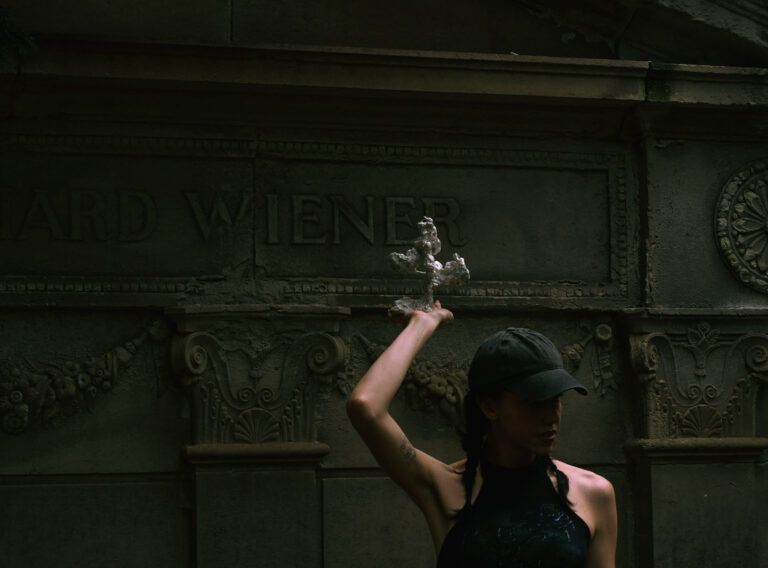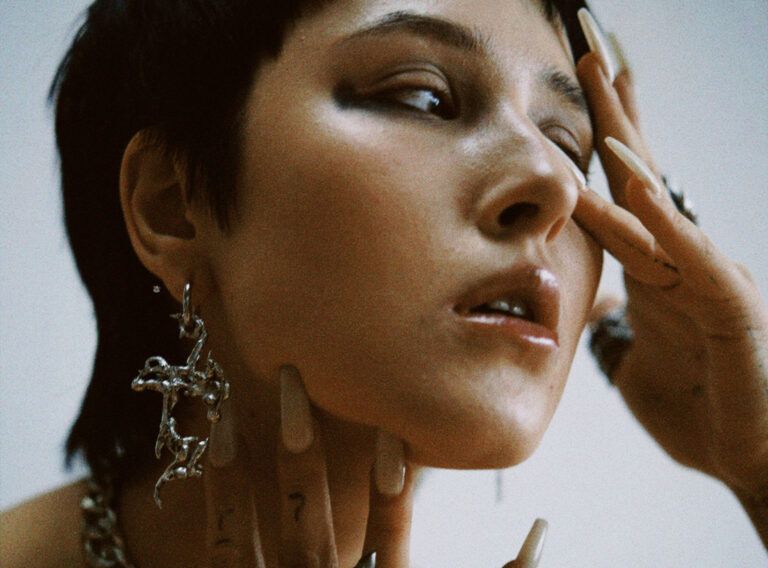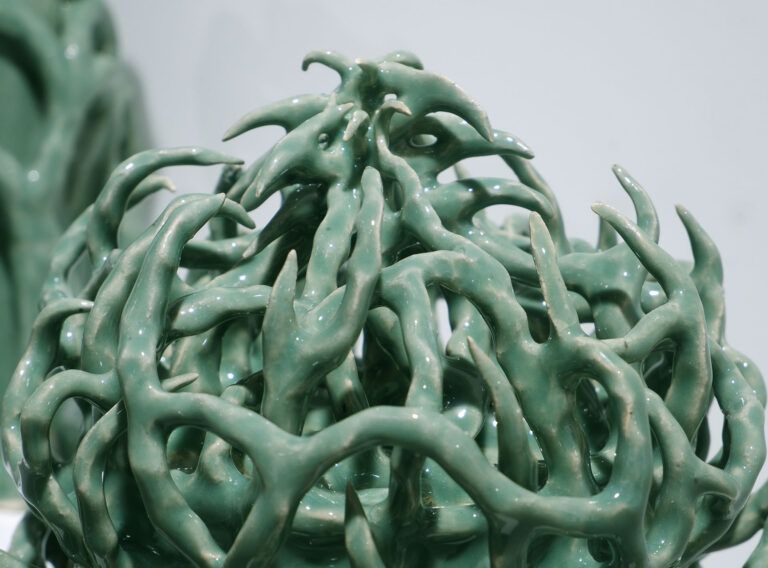Our ecosystem is on the verge of a sixth mass extinction caused by human activity. Due to gradual global warming, biosphere diversity is decreasing and the conditions for life on our planet will change irreversibly. These changes will be recorded in geological layers. The EREBO art installation exposes our apparent immortality. Structural, densely blown glass objects represent life – here and now. Their aesthetic is based on marine invertebrates anchored to coastal rocks bathed by the ocean. In contrast, the raw porcelain reliefs, representing the calcified shells of dead animals, refer to the past – extinction. The depicted layer of sediment, together with the glass objects, describes the cycle of life on our planet, but also warns of imminent catastrophe.
DESCRIPTION / The topic of my final thesis is based on the phenomenon of the massive decline in biosphere diversity, which refers to the extinction of numerous species of organisms or even the eradication of entire ecosystems. I approach this issue through the language of geology, which, with its extensive timescales, preserves the individual historical stages. The focus is on the issue of the current state of the ecosystem, which has reached the brink of the sixth mass extinction as a result of human activity. Based on numerous scientific studies, it is clear that a mere two-degree Celsius increase in temperature will irreversibly change the conditions for life on our planet and its form as well. This transformation will be recorded in the geological layer through the influence of surrounding factors. Although the environmental crisis has not yet severely limited us, it is not taboo to acknowledge that if society’s approach to nature does not drastically change in the coming years, the entire ecosystem will collapse like a house of cards. To expose our apparent immortality, I have created an artistic installation called EREBO, divided into two parts.



The first part embodies the present (here and now) through densely blown glass objects representing life. Their aesthetics are inspired by marine invertebrates anchored to coastal rocks, weathered by the ocean.
The second part represents the past (extinction). It consists of pedestals symbolizing those very coastal rocks. With raw porcelain reliefs replicating the structure of the glass objects (placed on them), they represent extinct organisms whose shells have fossilized and merged with the surface of the rocks. The depicted sediment layer, together with the glass objects, describes the cycle of life on our home planet, but also warns of the impending catastrophe.


The name Erebo comes from the Latin name Erebos, which in Greek mythology was the god of eternal darkness and eternal darkness itself. His name is given to the darkest part of the underworld, where Hades himself resides. Erebos was one of the earliest gods, arising in the early days of Chaos, the state before the birth of the world. It is a lineage where darkness looms from the very beginning, followed by the birth of the world, and after its end, the world again plunges into eternal darkness.

The Erebo objects abstract the cycles of the birth and death of life on this planet from the perspective of a geological perception of time through abstracted animal structures. As already mentioned in the annotation, the theme of my work is based on the phenomenon of massive biodiversity loss and the eradication of entire ecosystems. The choice of this topic is not accidental, it is related to the contemporary environmental crisis. It has brought us to the very threshold of the sixth mass extinction. In my work, I aim to confront the viewer with vanished eras that expose the fragility of ecosystems, including our own. When will we stop ignoring this fundamental problem?


Ancient ecosystems preserved in geological layers have fallen under the change of the natural environment. Even extinct ancient civilisations often declined in their prime. Is our society resourceful enough not to suffer the same fate? In the few decades since the Industrial Revolution began, our ecosystem has been aggressively disrupted by many adverse influences, such as the burning of fossil fuels, the use of phosphate fertilizers, deforestation, and many others. Although we are still not fully experiencing the environmental impacts, the next two decades will decide the fate of the world as we know it.



To expose our immortality, I created the EREBO art installation. It is divided into two parts. The first is the concept of structural, densely blown glass objects representing life (here and now). Their aesthetic is based on marine invertebrates anchored on coastal rocks plastered by the ocean. The second part represents the past (extinction) and consists of pedestals that symbolize those coastal stones covered with the calcified shells of dead animals. The raw porcelain reliefs copy the structure of the glass objects (placed on them) and are inlaid on the surface of the carved shape in the form of a mosaic. The depicted layer of sediment together with the glass objects describes the natural cycle of life on our home planet, thus warning of an impending catastrophe.




